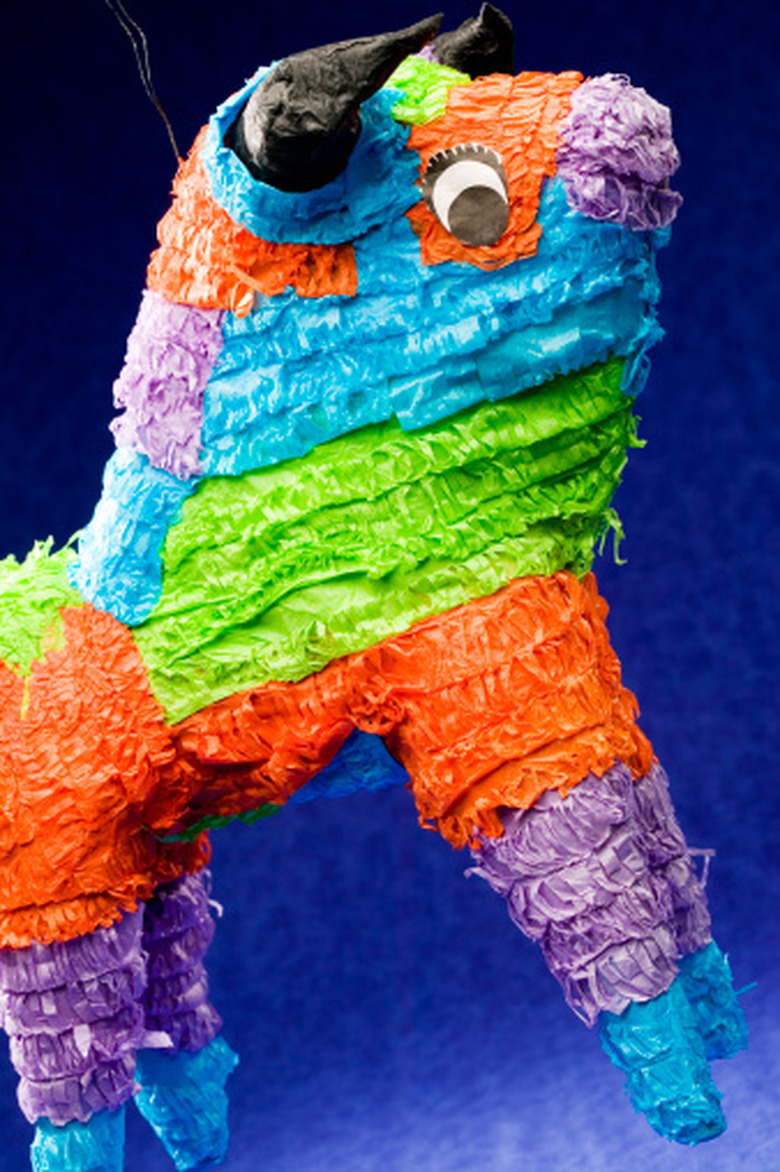How To Make A Paper Mache Cell
Science projects add depth to learning through interaction, and biology classes often include making models of cells. This helps students learn about these minuscule objects that are so tiny they need a microscope to see. Paper mache is an inexpensive crafting technique that students can create from a short list of common items found in most homes. While the project will take at least three days to complete, a student will have a cell model that is strong enough to last for years.
Step 1
Blow up one balloon to at least 9 inches in diameter, and the other balloon into a 6 inch diameter size. Tie a knot in each balloon and set aside.
Step 2
Mix the flour and water together in the plastic container using the wood spoon. Reach a smooth consistency free of lumps.
Step 3
Dip a strip of newspaper into the paper mache glue made from flour and water. Squeeze off excess paper mache glue from the strip. Place the strip on the top half of the larger balloon.
Step 4
Continue layering newspaper strips covered in glue over the top half of the balloon in a single layer. Add three more layers of paper mache strips. Set the balloon aside on the sheet of newspaper and let dry.
Step 5
Take the small balloon and repeat the process. Add four layers of paper mache strips over the top half of the balloon. Set this balloon on the sheet of newspaper.
Step 6
Let the paper mache dry for at least 24 hours, or until the glue is dry to the touch. Pop the balloons with scissors or a needle. Remove the broken balloons.
Step 7
Feel the inside of the paper mache sections to check for wetness; set aside and let dry if they remain moist. Paint both sides of the larger balloon, which is the cell membrane, in any color. Paint the outside of the small balloon, the nucleus, a different color. Let the pieces dry.
Step 8
Turn the nucleus over so the painted side is facing up and insert into the shell of the cell membrane. Attach the nucleus to the cell membrane with hot glue.
Step 9
Attach the organelles to the cell membrane around the nucleus with hot glue. Use the gummy worms to represent the smooth and rough endoplasmic reticulum. Add one ribbon-shaped candy as the Golgi apparatus.
Step 10
Hot-glue the small round objects that symbolize lysosomes, and the oval-shaped objects, which are vacuoles. Spread white glue over three or four small sections and sprinkle glue to symbolize proteins and ribosomes. Hot-glue the orange slices to represent mitochondrion.
Things Needed
- 2 Balloons
- Apron (optional)
- 2 cups water
- Cup of all-purpose flour
- Plastic disposable container, such as a butter bowl
- Long-handled wood mixing spoon
- Newspaper, torn into 1-inch wide strips
- Sheet of newspaper
- Scissors or needle
- Acrylic paint and paint brush
- Hot-glue gun with hot glue sticks
- 3 Gummy worms
- Old fashioned ribbon-shaped candy
- 5 or 6 Small round objects, such as marbles or gum balls
- 5 or 6 Small oval objects, such as candy eggs or jelly beans
- White glue
- Glitter
- 5 or 6 Candy orange slices
TL;DR (Too Long; Didn't Read)
If a child is using the paper mache, instruct her to wear an apron to prevent her from splashing on her clothing.
Warning
Keep the paper mache glue off of clothing and furniture to prevent damage. Take care when popping the balloons not to poke yourself.
References
- Enchanted Learning: Animal Cell Anatomy
- "Childcraft Volume 11 — Make and Do"; World Book Inc.; 1987
Cite This Article
MLA
Brumbaugh, Miranda. "How To Make A Paper Mache Cell" sciencing.com, https://www.sciencing.com/make-paper-mache-cell-8017860/. 24 April 2017.
APA
Brumbaugh, Miranda. (2017, April 24). How To Make A Paper Mache Cell. sciencing.com. Retrieved from https://www.sciencing.com/make-paper-mache-cell-8017860/
Chicago
Brumbaugh, Miranda. How To Make A Paper Mache Cell last modified August 30, 2022. https://www.sciencing.com/make-paper-mache-cell-8017860/
